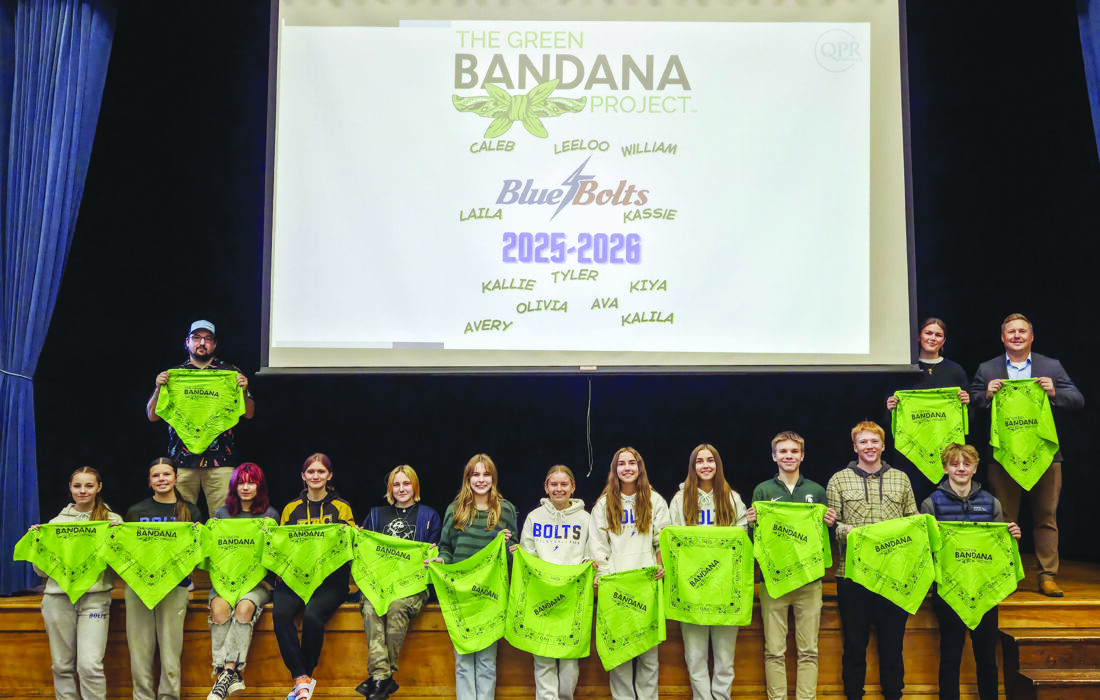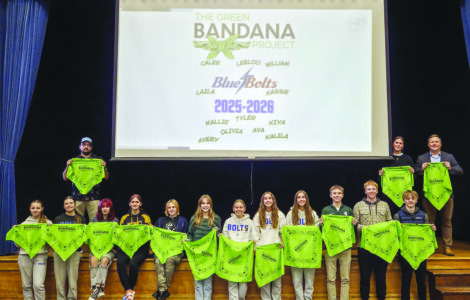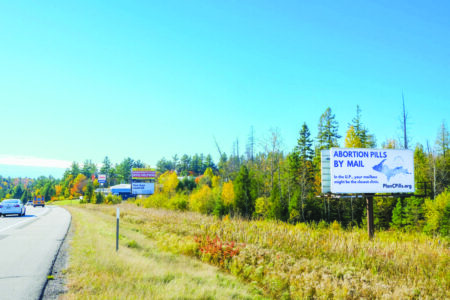Peer-to-peer support
Green Bandana Project comes to C.C. schools

Photo: Copper Country Intermediate School District social media page Dollar Bay-Tamarack Area Schools students proudly display green bandanas, indicating they have been trained in an increasingly popular student-led, peer mental health support project.
HANCOCK – The Copper Country Intermediate School District announced the launch of the Green Bandana Project in select schools in the Copper Country. The project is a student-led initiative for high school and college students to raise awareness of mental health, reduce stigma and connect students to mental health and suicide prevention resources.
According to the Green Bandana Project website, suicide is the third leading cause of death for people ages 15-24. The project aims to decrease the risk of mental health crises and suicide among high school and college-aged youth through increasing awareness of mental health resources and empowering students to reach out for help.
Green is the color of mental health awareness, according to the website. Student members go through a short training course, carry resource cards, and tie a green bandana to their backpack or another visible location as a way to let their peers know that they are a member of the Green Bandana Project and a trusted person who knows how and where to reach out for help.
The program was introduced to the area schools in 2024, by CCISD Mental Health Services Specialist Andy Kalcich, who said the project is basically a peer-to-peer mental health support program. It is currently operational in three school districts, Kalcich said. Dollar Bay-Tamarack City Area Schools, Chassell High School and Hancock High School have been fully trained as of now he said.
“We approached the schools at the end of the last school year with the idea,” Kalcich said. “The superintendents and the principals were on board, and then we started talking about all the details, and then the school staff at each school, went through and handpicked students they felt would be a good fit for this program, based on approachability, empathy, the ability to really understand mental health issues and be compassionate about them.”
Initiating the program and getting it started has taken time, he said. “It takes time, because we want to get the right students, and train them in the right way, to make sure that it really takes off the way it’s supposed to.”
Student training begins with a 45-minute orientation, Kalcich said. “We go through the nuts and bolts about what’s expected of them and not expected of them.” About a week after the orientation is completed, the students are given an approximate one-hour training in QPR (Question, Persuade and Refer), which is a suicide prevention model.
Kalcich said Houghton and Lake Linden-Hubbel schools are currently in the process, with orientation planned at both schools for this Friday. The following week, those students will be trained in QPR and, once that happens, those schools will then have an operational program.
Kalcich says the schools see a need for the project “based on the number of mental health referrals we’ve been getting through the schools for mental health services. Then it’s good just to have preventative measures. We know kids are going to talk to kids more than they’re going to talk to adults.”
Kalcich said what we wants to emphasize to avoid any confusion is the students are not expected to act as counselors or therapists. “They just have the tools to know where to bring them for professional help,” he explained.






